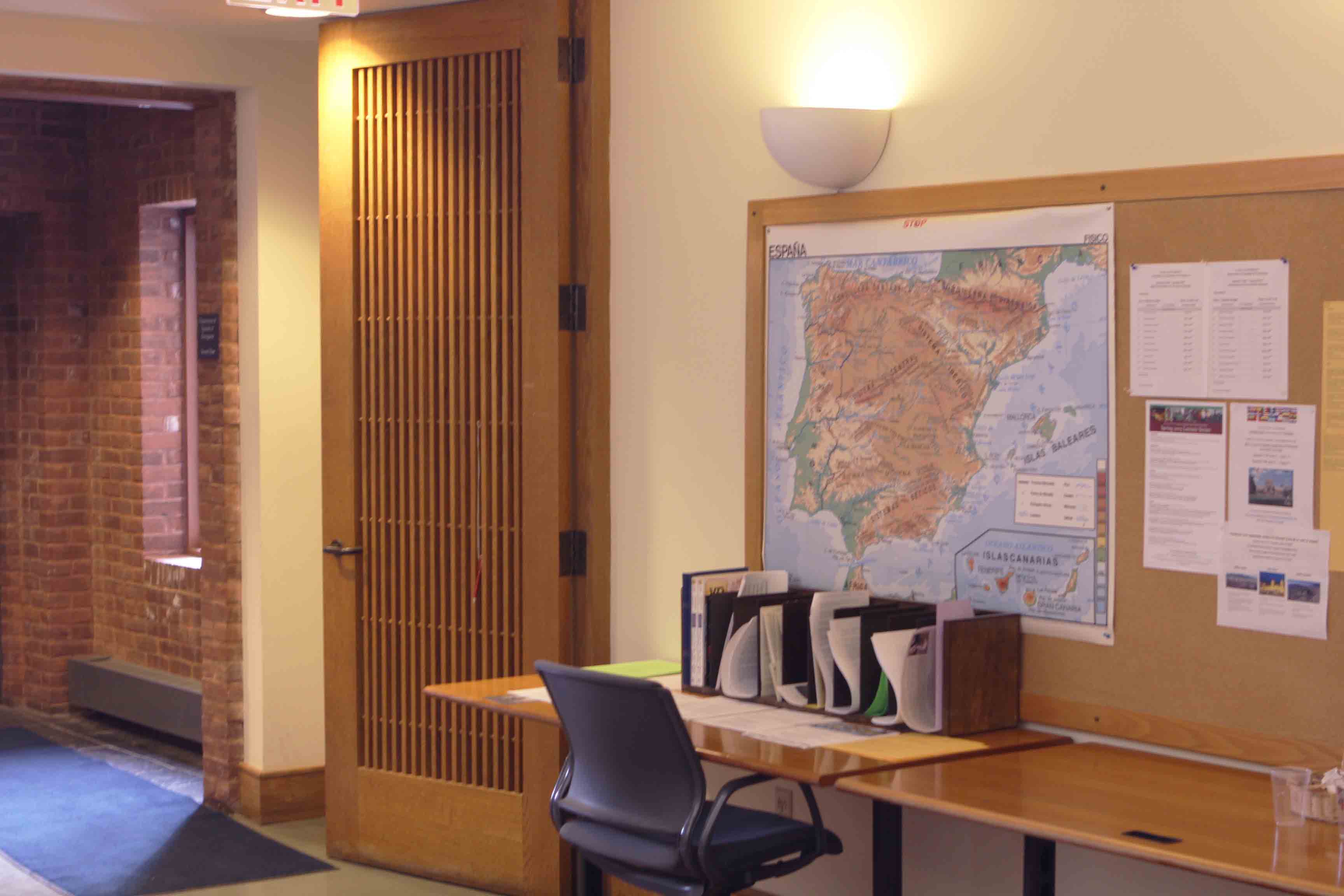
During the chaos of shopping period, the Spanish department was faced with a difficult decision: turn away students from its “Elementary Spanish II” course or oversubscribe the nine course sections offered.
Neither choice was ideal, according to Juliana Ramos-Ruano, the “Elementary Spanish II” course coordinator. If the department allowed the section sizes to grow past capacity, Ramos-Ruano and the other Spanish II lectors would not be able to give each student the attention necessary to learn the language. But if they turned students away, many students would not be able to fulfill the language distributional requirement needed to advance to the next grade or travel abroad on the intensive Spanish intensive trip to Bilbao, Spain this summer.
Ultimately, the Director of Language Programs for Spanish and Portuguese, Ame Cividanes, decided to oversubscribe the course, with between 17 and 18 students in all 9 sections.
With the opening of the new colleges and the growth in the undergraduate student body, these types of difficult decisions are becoming more commonplace — leading to scrutiny from the Faculty of Arts and Sciences Senate. According to the most recent Online Course Selection course demand statistics, 18 out of the 28 sections of Spanish language courses offered this semester have more than 16 students. And the Korean language program’s classes are even larger, with Korean Senior Lector II Seungja Choi GRD ’00 teaching two sections of 22 and 18 students. Over the past year, the number of students enrolled in Korean language courses has spiked from 60 in fall 2017 to 83 in fall 2018, Choi said.
The four language lectors interviewed by the News — Ramos-Ruano, French Senior Lector II and Language Program Director Ruth Koizim GRD ’77, Spanish Senior Lector I Maripaz García and Choi — each gave different answers for what the maximum number of students in an ideal language class should be: 14, 15, 16 and 12, respectively. But no lector stated a number higher than 16. García said that enrolling more than 16 students is “problematic” because each student has fewer opportunities to speak in class and build the confidence to speak with peers in a foreign language. She added that it also creates logistical difficulties because most of the rooms given to language sections do not comfortably accommodate 18.
“If we accept the rationale for the opening of the new colleges as ‘to make the excellent Yale education available to a greater number of deserving students,’ what does it mean when because of the expansion a fundamental aspect of that quality education is sacrificed?” Koizim said.
Koizim, who is also a Faculty of Arts and Sciences senator, said the large class size in the Korean and Spanish language programs is an issue on the agenda of the FAS Senate’s Expansion Committee, which published a report in 2016 recommending an increase in faculty hiring and calling for improved communication between faculty members and administrators about the growth of the undergraduate population as well as broader discussions regarding the nature of education at Yale.
But Dean of the Faculty of Arts and Sciences Tamar Gendler ’87 said that all the increases in enrollment for language courses are “fully in the expected range” given the 15 percent increase in the size of Yale’s first-year class.
According to Gendler, the FAS Dean’s Office planned carefully for the increase in undergraduates by introducing additional teaching resources and, in the case of the modern language departments, making a number of new appointments and arranging for veteran lectors to occasionally take on additional sections. She added that her office remains in close communication with all its departments and programs, especially those with potential for increased enrollments based on the office’s “past experience and extensive analysis”
“We are fortunate to have a large base of experienced, highly skilled and extremely capable instructional faculty who are able to manage effectively in real time a broad range of classroom dynamics,” Gendler said. “Enrollments are of central importance in determining the appointments of instructional faculty in our language departments.”
But García said that although the Spanish department hired an additional lector in anticipation of the opening of the new colleges, that hire was not enough to accommodate the increased enrollment. The Spanish language program would benefit from hiring more lectors and finding more classroom space, García added.
The Korean department, meanwhile, did not hire any additional lectors before the opening of the new colleges. Choi said the addition of one more language instructor would help fix the problem of overly large class sizes and allow the program to restore some Korean courses cut a few years ago. Currently, there are only two faculty members, Choi and Senior Lector II Angela Lee, who together taught a total of 83 students last semester and 59 students this semester.
While Ramos-Ruano, García, Koizim and Choi all attributed the increase in class sizes in large part to the growth of the undergraduate student body, Choi cited a number of additional reasons for the growth of the Korean program, including the increasing popularity of Korean pop culture, the publicity of South Korea’s economic development, the upcoming Winter Olympics in South Korea and media attention surrounding the North Korea nuclear issue.
Ramos-Ruano said she wants her students to know that the Spanish language program did the best it could with the resources it had.
“We really need the help of the University to fulfill the expectations of the students. I’m happy with what I’m doing, but with 18 students, I feel like I’m not doing my best and taking care of my classes,” Ramos-Ruano said. “We support the students 100 percent. But can I support them 100 percent when I have 18 students? Not really.”
Adelaide Feibel | adelaide.feibel@yale.edu







